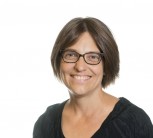A research project on indigenous Christian elites in Asia and Africa is in the spotlight with a lecture series on the topic presented by Prof Koschorke, an eminent historian of world Christianity from LM University Munich and author of numerous scholarly publications. This project is of direct relevance to the research activities of University of Pretoria (UP) staff members Prof Lize Kriel of the Department of Visual Studies and Prof Jerry Pillay of the Department of Church History and Polity.
Prof Pillay is a Church historian currently establishing a research initiative at UP focusing on African Christianity, while Prof Kriel is a cultural historian specialising in book history, specifically text production in Christian missionary networks. Prof Koschorke’s current research project complements these UP researchers’ latest ventures perfectly, resulting in his visit to the University.
The main aim of Koschorke’s project is to combine rigorous historical enquiry with a trans-disciplinary approach to study early south-south links and transregional and transcontinental networks of communication. These networks enabled the circulation of news and ideas and led to direct contacts and exchange between indigenous Christian elites from different religions, independently of missionary communication structures.
Koschorke summarises: “In 1900, approximately 82% of the Christian world population still lived in the northern hemisphere; since the 1980s, the growing majority is located in the so-called ‘Global South,’ in Asia, Africa, and Latin America. In 2010, the figure was about 65%, and it is growing.”
Yet, current curricula in church history and world history tend to remain stuck in explanatory paradigms like a metropolitan view, limiting the spread of Christianity along colonial ‘supply routes’, and juxtaposing various regional or local histories without tracing connectivity. It also over-emphasises on the role of European missionary societies and is confined to silo-structured knowledge production in separate academic disciplines.
In a recent article in Theology Today, the journal of the Princeton Theological Seminary, Prof Koschorke addresses the current need for a new historiography towards an integrated history of world Christianity. He convincingly illustrates that comparative studies among different regions of the Christian world and the search for early instances of transcontinental links in the ‘Global South’ are critical to such a new historiography – hence his current project. By inviting Prof Koschorke to share the results of the research conducted thus far, Prof Pillay aligns Church historical research at the University of Pretoria with this process.
Prof Kriel explains that Prof Koschorke’s ground-breaking work on south-south Christian networking outside the realm of European and American missionary societies juxtaposes her own primary interest in north-south transcontinental exchange between European missionary societies and African Christians.
“Prof Koschorke’s contribution to de-centring Europe in global church historiography, is aligned to my work: rather than taking the sources affirming the prominence of Western institutions in the making of African Christianity at face value – which had been the case until well into the twentieth century – I illustrate how and why the dynamic had been visualised as such, and traces what had been rendered invisible in the process,” says Prof Kriel.
By giving Prof Koschorke an opportunity to present his project in South Africa, Proff Kriel and Pillay aim to facilitate a conversation between colleagues from UP and neighbouring universities interested in the transfer of knowledge via religious communication networks. Prof Koschorke will also assist currently enrolled postgraduate students to enhance the contextualisation of their studies and encourage prospective postgraduate students to pursue research topics in the politics of image and text production, the making of African Christianities and the cognitive interaction and trans-regional networking of Christian communities.
While at present the experience of the research team is limited to the study of Christian networks, they do not exclude the possibility that in future they may also interest scholars specialising in the study of other faith communities as well.
View the lecture series programme.
Prof Lize Kriel Prof Jerry Pillay
February 23, 2015

Professor Lize Kriel is an Associate Professor in Visual Culture Studies (History) at the University of Pretoria (UP). She completed her undergraduate studies at UP in what was then the Department of History and Cultural History. Her other major was Afrikaans, which was an intensive course in grammar and comparative literature. In addition, two years of Biblical Studies introduced her to the world of textual criticism, which she says turned out to be excellent preparation for the historical research that she conducted much later in the archives of various Christian communities.
Prof Kriel went to university with the intention of becoming a teacher, a profession that runs in the family. When she left school, she had only a vague idea about the ways in which knowledge is created. “It has fascinated me ever since,” she says. “I learnt that the synergy between teaching and research is exhilarating. I had exceptional lecturers who gave me many opportunities, for which I am very grateful.”
She says she hopes that being involved in research will constantly remind her of how complicated things are, how many sides there are to a story and how easy it is to look without seeing. “It should humble us to be eager to listen and slower to judge.”
Within her academic discipline, Prof Kriel is leading a project called ‘African au-o-ral art in image-text objects: cultural translation of precolonial memories and remains’. This research project, which is funded by the National Institute for the Humanities and the Social Sciences (NIHSS), was inspired by previous collaborations and by new partners, such as School of the Arts postdoctoral fellow Dr Laura de Harde, who has done research on rock art documentation. Another inspiration for Prof Kriel is Sikho Siyotula, who is completing her PhD. She is doing a joint degree at UP and the University of Potsdam.
Remains from the past and how to make sense of them is a prominent theme in Prof Kriel’s work. “Along with the other members of our interdisciplinary team, we are trying to find ways of making sense of what had been captured about precolonial South African culture by missionaries and other ethnographers in image and text,” she explains.
“Our project includes partners in Germany, Togo, Kenya and South Africa. We have a common interest in images and their history. While my students and I work in the School of Arts, several of the other partners work in departments of language and literature, and in religious studies.”
She is part of an international cross-faculty research training group called the Minor Cosmopolitanisms, which is anchored at the University of Potsdam. The group’s interdisciplinary research is one of its strengths. Previously, Prof Kriel was hosted by the Faculty of Theology at Humboldt University in Berlin, and prior to that, she was a fellow at Leipzig University’s Institute for African Studies. At UP, she collaborates with colleagues in theology, education and publishing.
Prof Kriel counts her part in the 2015 publication of a tome on translated and annotated texts of Northern Sotho-speaking people – of what is Limpopo today, especially the area east of present-day Polokwane – as a highlight. Historically, the texts were co-created by Berlin missionary Carl Hoffmann and interlocutors from the Mamabolo and Mamatola communities. The contemporary project leader was Dr Annekie Joubert of Humboldt University. Although these rich texts are now available in English and modern Sepedi, their meaning and implications have not yet been fathomed.
Several students have started working on aspects of this ethnographic collection. Matete Phala and Nkami Manyike have completed their MA degrees, and a student from Leipzig, Annika Vosseler, is about to submit her PhD. “We hope to publish a book on our findings in 2022,” Prof Kriel says. “There will also be chapters by Annekie Joubert, Sam Moifatswane, Barry Morton, Margrit Schulze and Kokou Azamede. I am dreaming of a beautiful book with visual evidence that enhances the argument every step of the way. That is the joy of working in the School of Arts. There are generous experts who know how to make books and take pictures, often also pictures of pictures. Artist and colleague Carla Crafford is assisting me with this part of the research.”
Prof Kriel says there were many inspiring people on her research path. At school there were teachers, then lecturers in history, biblical studies and Afrikaans. Her research inspiration really began, she says, when lecturer Karina Sevenhuysen taught her how to approach an assignment in her first year. “I also owe a lot to the supervisors of my doctoral study, Professors Johan Bergh and Cobus Ferreira. I would also like to mention Fred Morton of the University of Botswana, Adam Jones in Leipzig, Dishon Kweya in Nakuru, Kenya, and more recently John Wright.
“Closer to home, I am incredibly lucky that my partner of the past 20-plus years is an always-there soulmate. He reads more broadly and deeply than I can imagine; never tires of conversations about the things that interest me, buys me books and filters social media for me. He challenges me a lot and gives me many ideas. However, he is a lousy assistant in the archives, because he is intrigued by everything and digresses from the topics that I would like him to pursue for me!”
She describes Isabel Hofmeyr’s book We Change Our Years as a Tale That is Told as an eye-opener academically; this is followed by The Portable Bunyan, also by Hofmeyr. Prof Kriel says she remains enthralled by what she has learnt from those books. Hlonipha Mokoena, author of Magema Fuze: The Making of a Kholwa Intellectual, is another writer she admires. “There are stories of such intellectuals in the Berlin Mission archives and we are slowly excavating them in our NIHSS project.”
Prof Kriel says she is indebted to Annekie Joubert of Humboldt University whom she regards as a mentor. She took the professor along on her first field trip and encouraged her to apply for an Alexander von Humboldt fellowship. “She made me take on responsibilities in her research projects that I would never have had the courage to do on my own,” Prof Kriel says. “She taught me how to apply for funding and how to manage a project. She made me think about the possibilities of other media, like exhibitions, films and web-based databases. She even got me to appear in one of her documentary films; she guided me into visual research. Her book The Power of Performance, published in 2004, was way ahead of its time, and is still exemplary for the way it accounts for knowledge transfer as a multi-sensory endeavour and experience.”
In her academic work, Prof Kriel hopes to contribute to the multi-perspectival bigger picture. “I am an admirer of global perspectives on the past, as much as I am, as a researcher, a splitter rather than a lumper.” Yet, she would like to believe that the small “cameos” she makes contribute to the bigger picture.
Why does her research matter? “Perhaps it does not matter,” she says. “Perhaps it is the pursuit that matters; to be prepared, to be surprised by past ways of seeing.”
Prof Kriel’s advice to school learners or undergraduates who are interested in her field is to read.
 Story
Story
University of Pretoria (UP) researchers have found that the antioxidant content of certain types of tea can be likened to that found in recommended portions of fruit and vegetables.
 Infographic
Infographic
Half a cup of black tea, oolong tea or green tea contained the same amount of antioxidants with radical scavenging capabilities (RSC) as that of a 200mg vitamin C tablet.
 Story
Story
Researchers at the University of Pretoria (UP) may have identified the gene that is responsible for diet-related obesity. By exploring the role of the novel gene Slc7a8, they have made a potential breakthrough in current knowledge about the cellular mechanisms that drive fat accumulation. This understanding is crucial in developing effective treatments.
Copyright © University of Pretoria 2025. All rights reserved.
Get Social With Us
Download the UP Mobile App